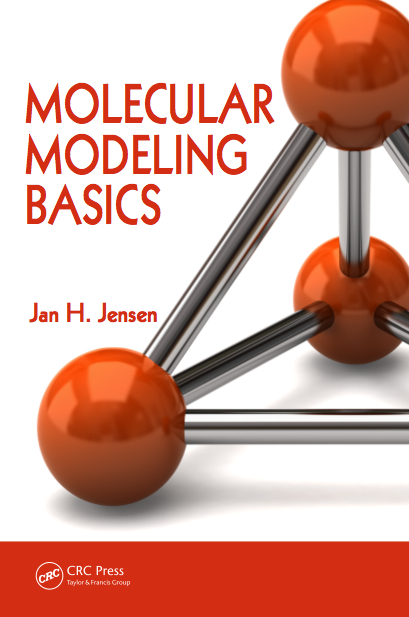 (1)
(1)This is a useful equation. Remember it, and your life will change for the better. The equation comes from one of the fundamental equations of statistical mechanics,
 (2)
(2)Both equations tell you how the energies of molecule A (EA) and B (EB) determine how many molecules of each (nA and nB) you will observe at equilibrium.
Eq (1) is simply a much more useful form of (2) for room temperature conditions, because it gives you a feel for what the relative energies mean in terms of chemistry. Yes, with a little practice you will be able to amaze and astound your friends.
An energy difference of 4.5 kcal/mol? Why, that means 0.001 times less B than A. 6.0 kcal/mol? 0.0001! The trick is to recognize that 1.36 is close enough to 1.5, and that 4.5/1.5 = 3 and 6.0/1.5 = 4, meaning that the energies correspond to concentration ratios of roughly 10-3 and 10-4, respectively. Respect, indeed! You'll be the life of the party.
You could of course use a calculator to get more accurate results, in which case you might as well use Eq (2). But if you routinely bring a scientific calculator to parties, then you have more serious problems to worry about anyway.
The astute reader will note that I made things pretty easy for myself by picking 4.5 and 6.0 kcal/mol, and that dividing, say, 5, by 1.5 is no mean feat. But at least you'll know that the answer is somewhere between 10-3 and 10-4, and that's often all you need.
If you believe in the metric system () you may prefer to work in kJ/mol, in which case 1.36 should be replaced by 5.70 and approximated by 6.
You can do the same party trick with rate constants by using transition state theory,

A barrier of 6 kcal/mol?, why that's a whopping 109 per second! 20 kcal/mol? Here it's a good idea to sip your beer, to stall for time ... 0.1 s-1, of course! I usually count by 3's (2 times 1.5), 2o is close to 21, 7 times 3, 14 times 1.5, meaning 1013-14, 10-1. Get me: I'm Richard Feynman!
On a different note, I firmly believe that animations similar to the screencast in this post could be used to make derivations much more accessible to students. I haven't been able to find any software to do this and I think this is a gaping hole in the world of software. I made the screen cast with Powerpoint, and there were many, many things I would change about if ppt would let me.
In case the notion of animated derivations strikes you as crazy, I leave you with a quote from Richard Feynman's aptly named book What Do You Care What Other People Think:
"When I see equations, I see the letters in colors – I don't know why. As I'm talking, I see vague pictures of Bessel functions from Jahnke and Emde's book, with light-tan j's, slightly violet-bluish n's, and dark brown x's flying around. And I wonder what the hell it must look like to the students."
An energy difference of 4.5 kcal/mol? Why, that means 0.001 times less B than A. 6.0 kcal/mol? 0.0001! The trick is to recognize that 1.36 is close enough to 1.5, and that 4.5/1.5 = 3 and 6.0/1.5 = 4, meaning that the energies correspond to concentration ratios of roughly 10-3 and 10-4, respectively. Respect, indeed! You'll be the life of the party.
You could of course use a calculator to get more accurate results, in which case you might as well use Eq (2). But if you routinely bring a scientific calculator to parties, then you have more serious problems to worry about anyway.
The astute reader will note that I made things pretty easy for myself by picking 4.5 and 6.0 kcal/mol, and that dividing, say, 5, by 1.5 is no mean feat. But at least you'll know that the answer is somewhere between 10-3 and 10-4, and that's often all you need.
If you believe in the metric system () you may prefer to work in kJ/mol, in which case 1.36 should be replaced by 5.70 and approximated by 6.
You can do the same party trick with rate constants by using transition state theory,

On a different note, I firmly believe that animations similar to the screencast in this post could be used to make derivations much more accessible to students. I haven't been able to find any software to do this and I think this is a gaping hole in the world of software. I made the screen cast with Powerpoint, and there were many, many things I would change about if ppt would let me.
In case the notion of animated derivations strikes you as crazy, I leave you with a quote from Richard Feynman's aptly named book What Do You Care What Other People Think:
"When I see equations, I see the letters in colors – I don't know why. As I'm talking, I see vague pictures of Bessel functions from Jahnke and Emde's book, with light-tan j's, slightly violet-bluish n's, and dark brown x's flying around. And I wonder what the hell it must look like to the students."




3 comments:
Good to know!
If you're using a Mac, I highly suggest the combination of Keynote and LaTeXiT. You get PDF equations, and you can copy the PDF back to LaTeXiT to re-edit.
The best part is that I can often type the LaTeX faster than I can set it in MS Equation Editor or other GUI -- I'm usually hunting for one button or another.
MS Equation Editor actually has many keyboard shortcuts that makes it efficient, but the learning curve is a little steep.
However, if I ever try to write code to animate derivations, I am sure I'll have to learn the LaTeX format, or something similar.
Matplotlib looks like the likeliest suspect so far.
Post a Comment